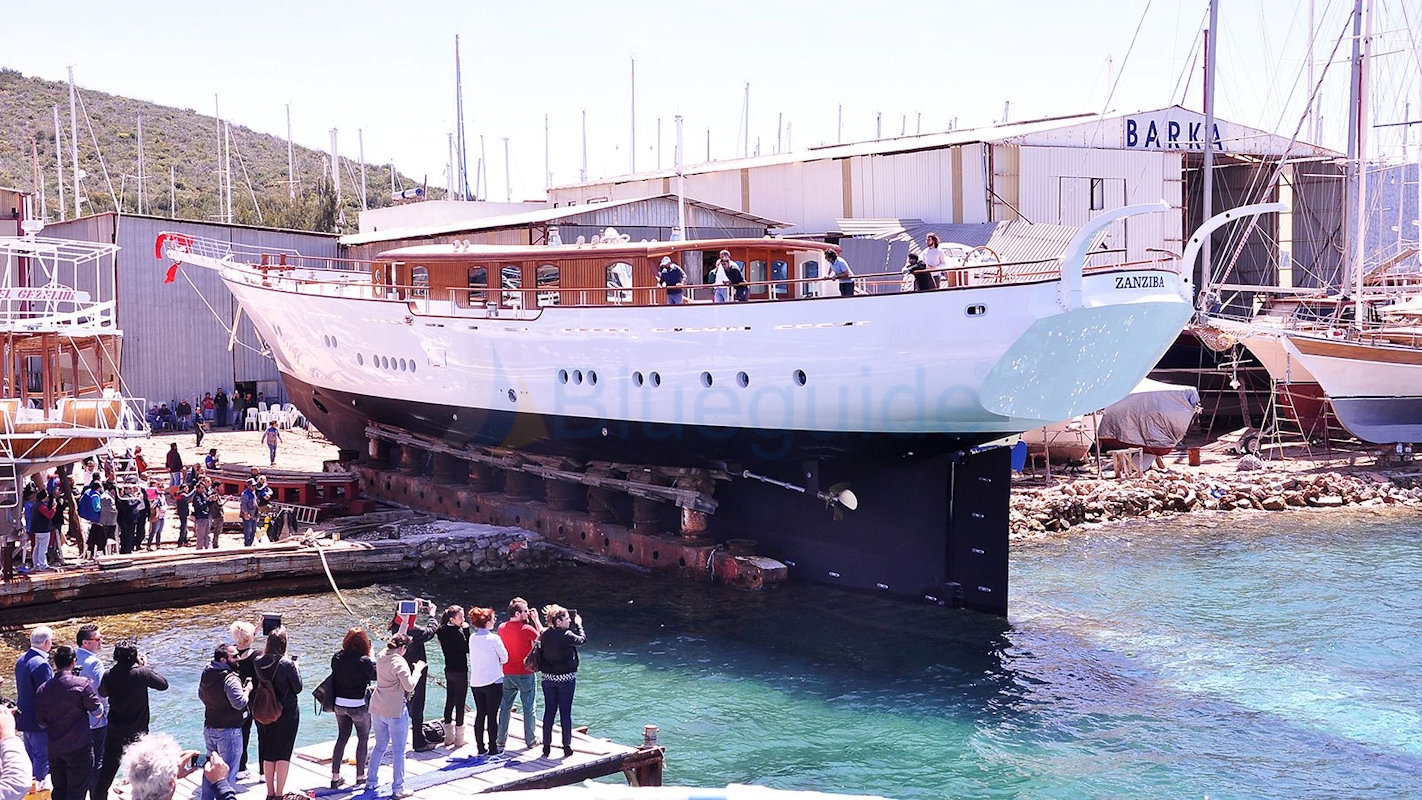
Find Out How To Build And Launch A Gulet
Build And Launch A Gulet. The gulet is the boat of the celebrated blue cruises along Turkey’s spectacular southwest coast. With its roomy deck at the stern this traditional boat is perfect for passengers to savour the delights of cruising the inlets and coves. The word derives from the Italian ‘giulietta’.
The early history of this sailing boat remains largely unknown, apart from the fact that building these boats in Turkey is a tradition unique to Bodrum, although the gulet itself is suitable for sailing in all seas. It is claimed to be unsinkable by the half-dozen recognized master craftsmen who build gulets in Bodrum and Güllük since decades. The combined launch of these local boatyards reach 15-20 boats per year. A perfect gulet will have the bottom of the hull in the form of a reversed S and the cross-timbers should be laid on the slant.
Making a single gulet takes about one and a half years, including the cabin, and the price starts at about 133,000 dollars without the engine. Counting that a good engine would cost at least 30,000 dollars and the additional costs such as fuel tank and hose, the total outlay for a gulet ready to sail is around 200,000 dollars. The type of wood used can be pine, mulberry or mahogany, preferably cut during the summer, and surprisingly, at full moon.
The procedure of building boats today has changed very little over the centuries. The changes to the basic plank-on-frame method are superficial. Electrical tools now allow craftsman to sand and shape wood faster and with more precision than they used to be able to by hand, and laminated epoxy allows for increased design options. Inside the boat, design has changed over the years have increasingly opted for larger dining and lounging facilities.
A properly maintained gulet can last over thirty years. Each winter most boats must be taken out of the water and the hulls scrubbed and given a thick coat of paint in addition to other routine maintenance.
The traditional construction of a boat starts with the laying of a keel (keel is foundation beam for the boat and ship), a massive piece of wood supported on a branching stern about a foot above the ground at both ends. This is stepped to take the stern-post (rearmost part of a ship or boat) and also the stem post (the pointed front part of a ship or boat), all made of massive pieces of timber.
The keel is laid first and later the planks or ribs are attached. Usually for the keel and stern one single piece of wood is always preferred. The planks are then fastened horizontally on either side of the keel. The planks join is edge to edge. Once all interior bracing and supports are fitted, work begins on interior cabins and hull planking.
When the hull is almost completed a customary ceremony takes place; the insertion of the baklava wood. The baklava wood is the last piece to be inserted, and it is called as such because its insertion signifies that an important phase of construction is now finished and a joyful event accompanied by a small celebration featuring baklava (a popular Turkish sweet pastry) ensues. After this minor milestone, work then continues on interior and topside construction.
In addition to all woodwork, all metalwork is also done in the yard or by special fitters in Bodrum, usually in stainless steel. Raw pieces are shaped to fit the required applications, be it spar, stern rail or fuel tank. Rigging is constructed by the yard or local specialists, custom designed and fitted to each yacht individually. With the exception of mechanical parts such as engines or electronics which are bought elsewhere and installed by the builder, the entire craft is supplied and constructed by local craftsmen in Bodrum.
Launching can sometimes be a Herculean task. Many boatyards are located well away from the sea and often huge boats must be brought several kilometers for launching. Smaller boats can be transported by trucks or pulled on trailers. With the bigger boats (sometimes over 30 meters), a sledge is placed under the keel and used to transport the boat to shore and employed for launching. Well greased wooden blocks are placed on the road and continually moved, back to front, as the sledge progresses. It is not unusual to turn the corner on to a Bodrum street only to find the way blocked by a huge yacht slowly making its way to the sea.
The grease used to oil these sledges and blocks of wood is that of sheep fat. A large cauldron is made from an empty steel barrel, and packed with salted fat which is solid until heated with a fire below the barrel. The liquid fat is then amply used for lubrication, and most builders claim that nothing synthetic works better than this timeless method.
